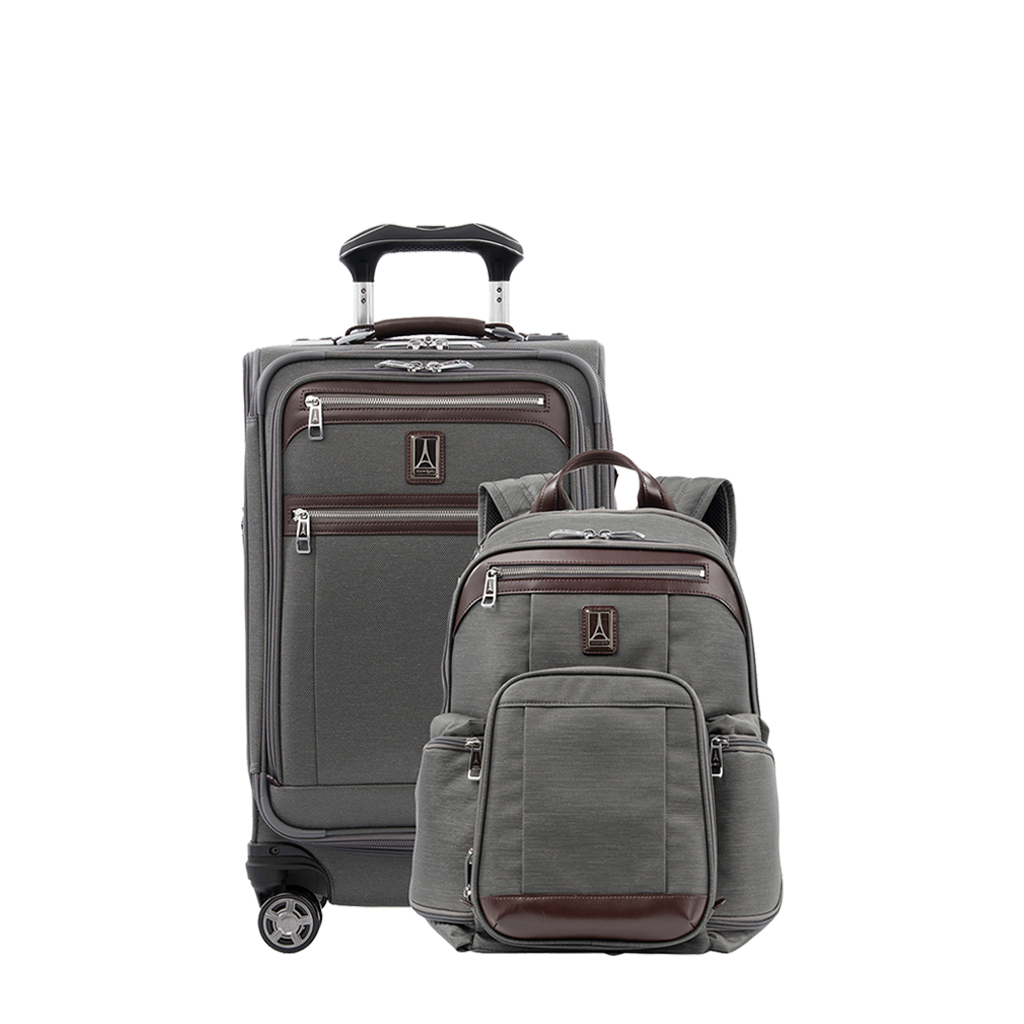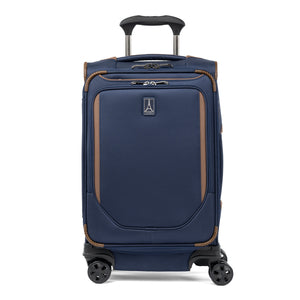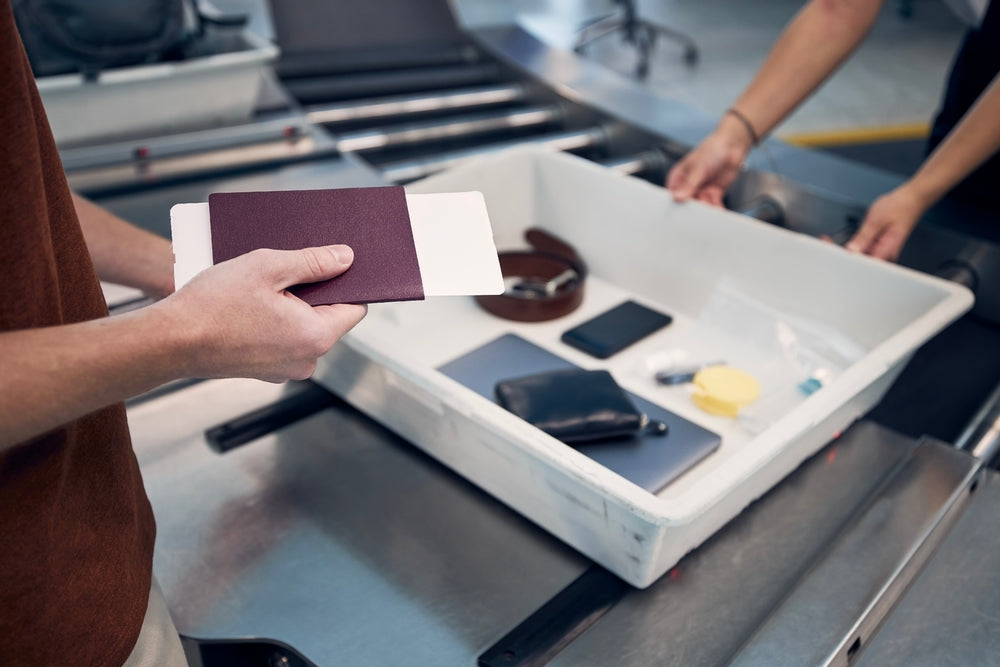Les longues files d'attente au point de contrôle de la TSA sont source d'anxiété, quelle que soit l'heure à laquelle vous arrivez à l'aéroport. Si tout le monde comprenait les règles de la TSA concernant la préparation des bagages, ces files d'attente seraient beaucoup moins fréquentes. C'est pourquoi nous avons rassemblé quelques-uns des conseils les plus importants et les plus indispensables en matière d'emballage pour les voyages en avion, qui vous aideront à passer le contrôle de sécurité sans délai.
Ces conseils de voyage pour la sécurité dans les aéroports ne vous aideront pas seulement à arriver plus rapidement à votre porte d'embarquement, ils vous permettront également d'avoir tout ce dont vous avez besoin à portée de main une fois à bord de votre vol.
Remarque : la plupart des grandes compagnies aériennes autorisent un bagage personnel (qui se range sous le siège devant vous) et un bagage à main (qui se range dans le compartiment supérieur), mais certaines compagnies aériennes font payer le bagage à main. Toutes les compagnies aériennes limitent la taille des bagages à main.
Que devriez-vous transporter dans vos effets personnels ?
Votre article personnel peut être un petit sac à dos, un fourre-tout, un sac à main ou une sacoche de messager, comme celle utilisée pour transporter votre ordinateur portable ou votre tablette. Le sac doit pouvoir être placé sous le siège devant vous dans l'avion. Comme votre sac de tous les jours peut contenir des objets interdits par la TSA, vous devrez le vider pour le réemballer en vue du voyage.
Il est temps de se demander ce que l'on peut emporter dans son sac à main à bord d'un avion. Et que dois-je emporter à bord ?
Vos effets personnels doivent contenir tout ce à quoi vous voulez accéder pendant le vol, ainsi que vos documents de voyage, de la nourriture, tout appareil électronique approuvé que vous apportez et vos médicaments prescrits, même si vous n'avez pas besoin de les prendre pendant le vol.
Ne vous contentez pas de tout mettre dans votre sac. Investissez dans des organiseurs de voyage et d'autres solutions d'emballage qui permettent de tout ranger en toute sécurité et d'y accéder facilement.

Les documents, y compris les passeports et les cartes d'embarquement imprimées, doivent être rangés dans une poche facilement accessible par vous mais pas par les autres. Certains sacs Travelpro sont même équipés de bloqueurs RFID qui protègent contre la perte et l'usurpation d'identité.
La nourriture, les médicaments, les câbles de chargement, les écouteurs et les autres objets nécessaires à bord doivent être rangés dans leur propre organiseur ou dans des poches dédiées afin de pouvoir être retrouvés rapidement. Placez-les dans les compartiments principal et frontal de l'article personnel.
Conseils de voyage pour les bagages à main
Alors que votre bagage personnel est destiné aux choses auxquelles vous voulez accéder rapidement, votre bagage à main sera stocké dans le compartiment à bagages supérieur et il ne sera pas aussi facile d'y accéder en plein vol. Utilisez votre bagage à main pour les choses dont vous avez besoin pendant une escale ou peu après l'atterrissage, surtout si votre bagage enregistré est perdu.
Quelques articles à mettre dans votre bagage à main :
- La plupart des articles de toilette
- Liquides (moins de 3,4 onces et à l'intérieur d'un sac en plastique transparent de la taille d'un quart de litre)
- Vêtements pour au moins un jour ou deux
- Une paire de chaussures supplémentaire
- Bijoux, maquillage et autres accessoires
- les e-cigarettes et les dispositifs de vapotage, qui sont interdits dans les bagages enregistrés
Là encore, utilisez des cubes d'emballage, des trousses de toilette et des rangements pour vêtements afin de tout garder en ordre. Il y a peu de chances que vous ayez besoin de changer de vêtements dans l'avion, alors préparez-les en premier.
Les liquides, dans leur sac de la taille d'un quart de litre, devraient être plus accessibles. Les nouveaux scanners de la TSA n'exigent pas que vous les sortiez de votre bagage à main, mais certains aéroports ont encore des modèles plus anciens.
Classez les objets dans des compartiments de manière à ce que, en cas de problème, il soit facile d'identifier l'objet qui incite la TSA à enquêter. La TSA joue un rôle important dans la sécurité des passagers aériens. Pour d'autres conseils utiles, consultez nos 5 conseils pourpasser facilementle contrôle TSA.
Passer rapidement les contrôles de sécurité dans les aéroports
Ce qu'il ne faut pas emporter est tout aussi important que ce qu'il faut emporter, et ce d'autant plus que les normes de sécurité l'exigent. Rien ne vous ralentira plus vite que la présence d'un objet interdit dans votre sac. Voici quelques-uns des objets les plus souvent confisqués :
- Armes, y compris couteaux de poche, pistolets paralysants et sprays au poivre.
- Bombes aérosols
- Lames tranchantes de plus de 4 pouces (les coupe-ongles sont acceptables ; les rasoirs à bords droits ne le sont pas)
- Briquets utilisant du butane ou de l'essence à briquet rechargeable
- Liquides ou gels de plus de 3,4 onces (voirla règle de la TSA surles liquides)
Une fois votre liste de bagages établie, lisez ce que vous pouvez et ne pouvez pas emporter pour éviter de vous faire piéger à la sécurité.
Conseil de pro : l'un des moyens les plus efficaces et les plus rapides de passer les contrôles de sécurité dans les aéroports est d'adhérer au programme TSA PreCheck. La plupart des grands aéroports disposent de points de contrôle de sécurité réservés aux passagers ayant souscrit au programme TSA PreCheck, ce qui, dans certains cas, permet de réduire à quelques minutes seulement le temps passé dans la file d'attente des contrôles de sécurité





